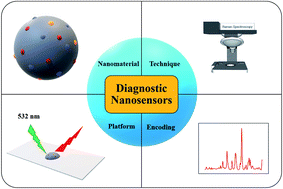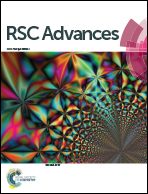Nanosensors for diagnosis with optical, electric and mechanical transducers
Abstract
Nanosensors with high sensitivity utilize electrical, optical, and acoustic properties to improve the detection limits of analytes. The unique and exceptional properties of nanomaterials (large surface area to volume ratio, composition, charge, reactive sites, physical structure and potential) are exploited for sensing purposes. High-sensitivity in analyte recognition is achieved by preprocessing of samples, signal amplification and by applying different transduction approaches. In this review, types of signals produced and amplified by nanosensors (based on transducers) are presented, to sense exceptionally small concentrations of analytes present in a sample. The use of such nanosensors, sensitivity and selectivity can offer different advantages in biomedical applications like earlier detection of disease, toxins or biological threats and create significant improvements in clinical as well as environmental and industrial outcomes. The emerging discipline of nanotechnology at the boundary of life sciences and chemistry offers a wide range of prospects within a number of fields like fabrication and characterization of nanomaterials, supramolecular chemistry, targeted drug supply and early detection of disease related biomarkers.



 Please wait while we load your content...
Please wait while we load your content...